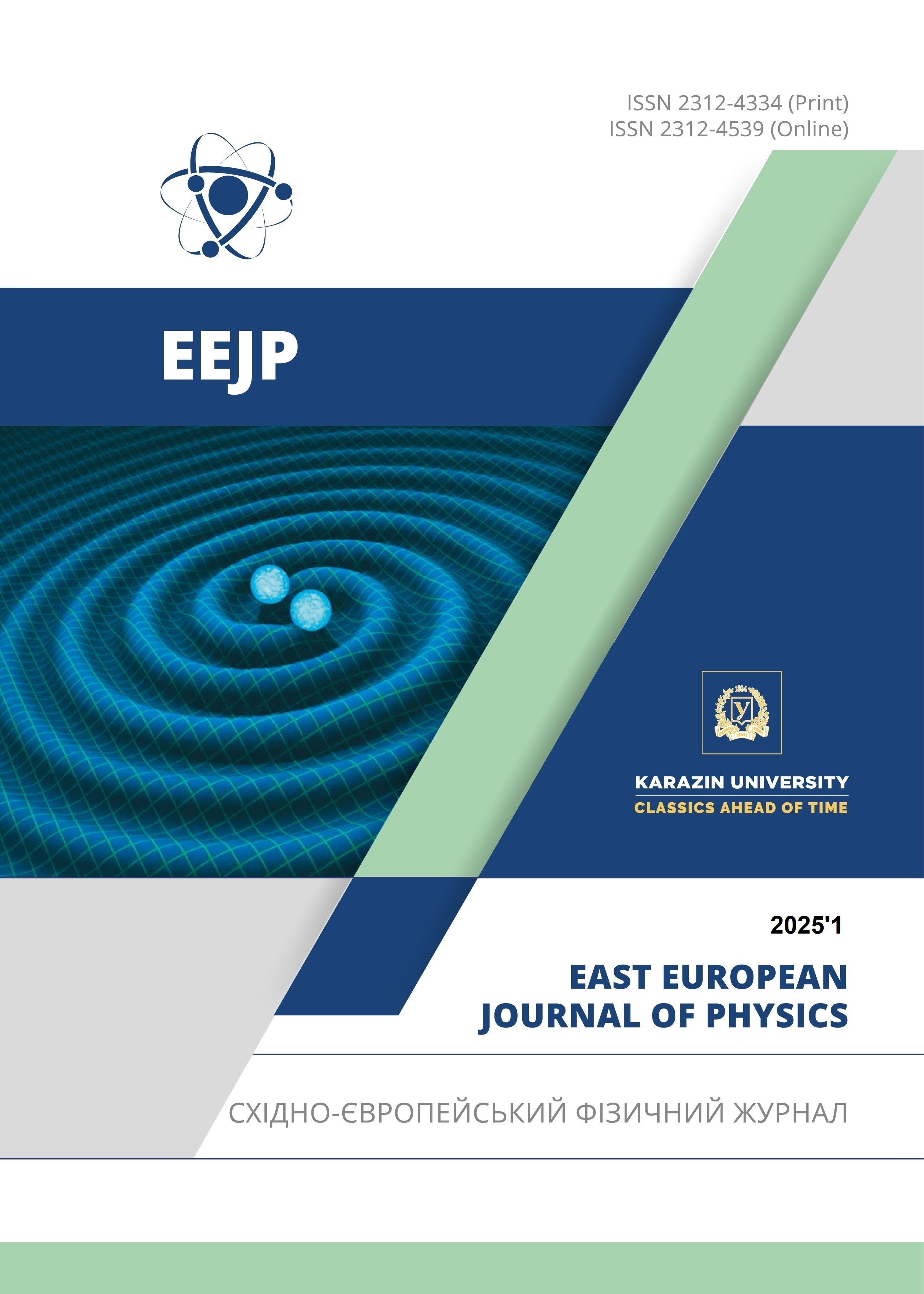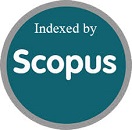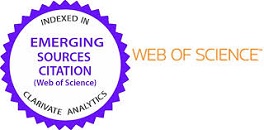Modulating Effects of Polyphenols on The Interactions Between Functional Proteins and Amyloid Fibrils
Abstract
The present study was focused on the investigation of the binary and ternary systems containing the functional proteins, polyphenols and amyloid fibrils using the differential absorption spectroscopy, intrinsic protein fluorescence and fluorescent probe techniques. The group of polyphenols (PF) included the representatives of four different classes: flavonoid quercetin (QR), phenolic acid (salicylic acid, SA), curcuminoid curcumin (CR) and tannin gallic acid (GA). The functionally important proteins were represented by hemoglobin (Hb), cytochrome c (Ct) and serum albumin (BSA). The amyloid fibrils were prepared from the N-terminal (1-83) fragment of apolipoprotein A-I with amyloidogenic mutation G26R (ApoA-IF). It was demonstrated that the spectral markers such as the position and intensity of the bands in differential absorption spectra, fluorescence intensity and emission maxima of the intrinsic (Trp) and extrinsic (TDV) fluorophores can be regarded as sensitive indicators of the protein structural modifications induced by amyloid fibrils and polyphenols. The observed changes in the Trp and TDV fluorescence were interpreted in terms of several processes: i) PF-induced conformational changes of the protein molecules accompanied by the alterations in microenvironment of Trp residues; ii) competition between PF and TDV for the protein binding sites; iii) non-resonance quenching of Trp or TDV fluorescence by PF; iv) resonance quenching (Forster resonance energy transfer) between Trp or TDV and PF. Taken together, the results obtained suggest that polyphenolic compounds can modulate the interaсtions between functional proteins and amyloid fibrils and can be considered as perspective agents for reducing the amyloid toxicity.
Downloads
References
G.J. Cooper, A.C. Willis, A. Clark, R.C. Turner, R.B. Sim, K.B. Reid, Proc. Natl. Acad. Sci. USA 84, 8628 (1987). https://www.ncbi.nlm.nih.gov/pubmed/3317417
A.P. Ano Bom, L.P. Rangel, D.C. Costa, G.A. de Oliveira, D. Sanches, C.A. Braga, L.M. Gava, et al., J. Biol. Chem. 287, 28152 (2012). http://dx.doi.org/10.1074/jbc.M112.340638
M. G. Spillantini, M. L. Schmidt, V. M.-Y. Lee, J. Q. Trojanowski, R. Jakes, M. Goedert, Nature 388, 839-840 (1997). https://doi.org/10.1038/42166
F. J. Bauerlein, I. Saha, A. Mishra, M. Kalemanov, A. Martínez-Sánchez, R. Klein, I. Dudanova, M. S. Hipp, F. U. Hartl, W. Baumeister, R. Fernández-Busnadiego, Cell 171, 179 (2017). https://doi.org/10.1016/j.cell.2017.08.009
H. Olzscha, S. M. Schermann, A. C. Woerner, S. Pinkert, M. H.Hecht, G. G. Tartaglia, M. Vendruscolo, M. Hayer-Hartl, F. U. Hartl, R. Martin Vabulas, Cell 144, 67 (2011). https://doi.org/10.1016/j.cell.2010.11.050
S. C. Goodchild, T. Sheynis, R. Thompson, K. W. Tipping, W. F. Xue, N. A. Ranson, P. A. Beales, E. W. Hewitt, S. E. Radford, PLOS One 9, e104492 (2014). https://doi.org/10.1371/journal.pone.0104492
M. P. Jackson, E. W. Hewitt, Essays Biochem. 60, 173 (2016). https://doi.org/10.1042/EBC20160005
K. F. Winklhofer, C. Haass, Biochim. Biophys. Acta 1802, 29 (2010). https://doi.org/10.1016/j.bbadis.2009.08.013
B. Uttara, A.V. Singh, P. Zamboni, R.T. Mahajan, Curr. Neuropharmacol. 7, 65 (2009). https://doi.org/10.2174/157015909787602823
H. Xie, C. Guo, Front. Mol. Biosci. 7, 629520 (2021). https://doi.org/10.3389/fmolb.2020.629520
S. Morikawa, N. Kaneko, C. Okumura, H. Taguchi, M. Kurata, T. Yamamoto, H. Osawa, A. Nakanishi, T. Zako, J. Masumoto, Int. J. Immunopathol. Pharmacol. 32, 2058738 (2018). https://doi.org/10.1177/2058738418788749
A. Nakanishi, N. Kaneko, H. Takeda, T. Sawasaki, S. Morikawa, W. Zhou, M. Kurata, T. Yamamoto, S. M. F. Akbar, T. Zako, J. Masumoto, Inflamm. Regen. 38, 27 (2018). https://doi.org/10.1186/s41232-018-0085-6
W. Mori, N. Kaneko, A. Nakanishi, T. Zako, and J. Masumoto, Int. J. Immunopathol. Pharmacol. 35, 1–7 (2021). https://doi.org/10.1177/20587384211038357
N. Wu, T. Liu, M. Tian, C. Liu, S. Ma, H. Cao, and J. Qi, Mol. Med. Rep. 29, 24 (2024). https://doi.org/10.3892/mmr.2023.13147
M.H. Ahmed, M. S. Ghatge, M. K. Safo, Subcellular Biochemistry, 94. (2020). https://doi.org/10.1007/978-3-030-41769-7_14
Y.L. Ow, D. Green, Z. Hao, and T.W. Mak, Nat. Rev. Mol. Cell. Biol. 9, 532 (2008). https://doi.org/10.1038/nrm2434
A. Rana, M. Samtiya, T. Dhewa, V. Mishra, and R.E. Aluko, J. Food Biochem. 46, e14264 (2022). https://doi.org/10.1111/jfbc.14264
G. Zazeri, A.P.R. Povinelli, N. M. Pavan, D.R. de Carvalho, C.L. Cardoso, V.F. Ximenes, J. Mol. Struct. 1244, 130995 (2021). https://doi.org/10.1016/j.molstruc.2021.130995
S. Chaudhuri, S. Chakraborty, P. K. Sengupta, Biophys. Chem. 154, 26 (2011). https://doi.org/10.1016/j.bpc.2010.12.003
A. Papadopoulou, R.J. Green, R.A. Frazier, J. Agric. Food Chem. 53, 158 (2005). https://doi.org/10.1021/jf048693g
Copyright (c) 2025 U. Malovytsia, V. Trusova, M.H. Thomsen, G. Gorbenko

This work is licensed under a Creative Commons Attribution 4.0 International License.
Authors who publish with this journal agree to the following terms:
- Authors retain copyright and grant the journal right of first publication with the work simultaneously licensed under a Creative Commons Attribution License that allows others to share the work with an acknowledgment of the work's authorship and initial publication in this journal.
- Authors are able to enter into separate, additional contractual arrangements for the non-exclusive distribution of the journal's published version of the work (e.g., post it to an institutional repository or publish it in a book), with an acknowledgment of its initial publication in this journal.
- Authors are permitted and encouraged to post their work online (e.g., in institutional repositories or on their website) prior to and during the submission process, as it can lead to productive exchanges, as well as earlier and greater citation of published work (See The Effect of Open Access).








